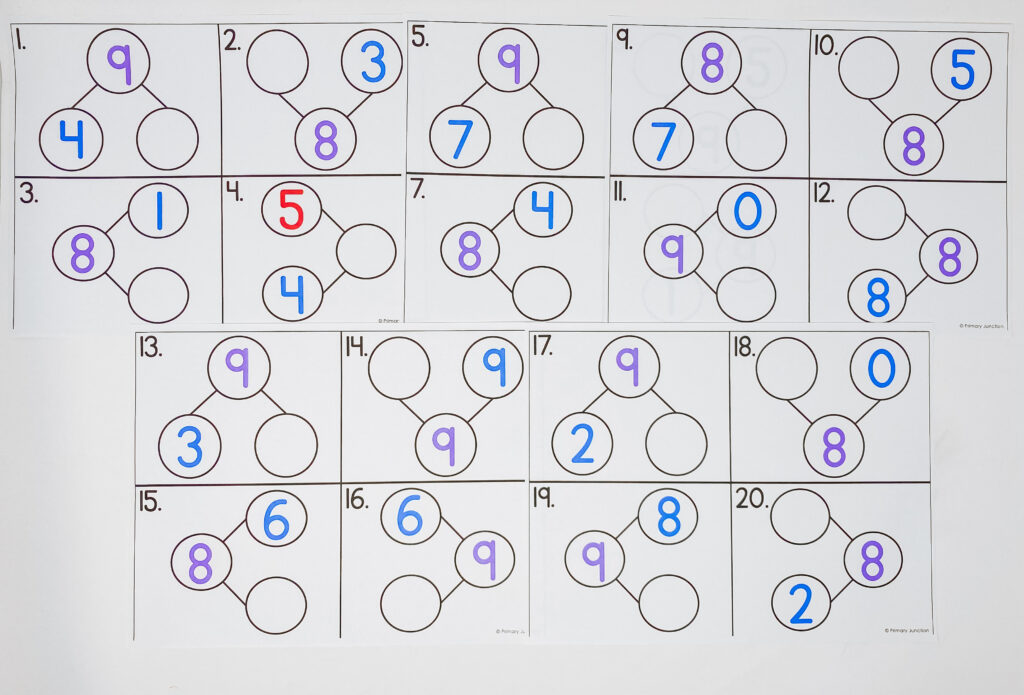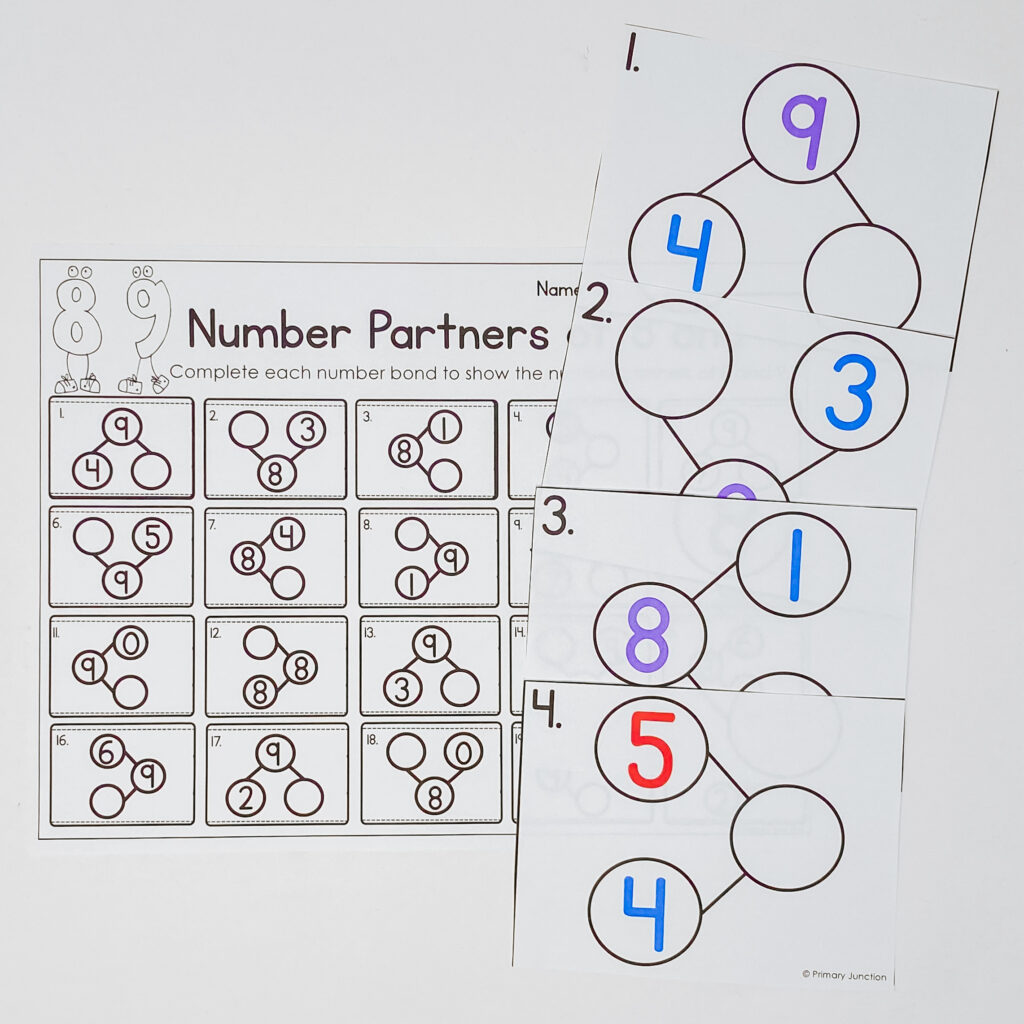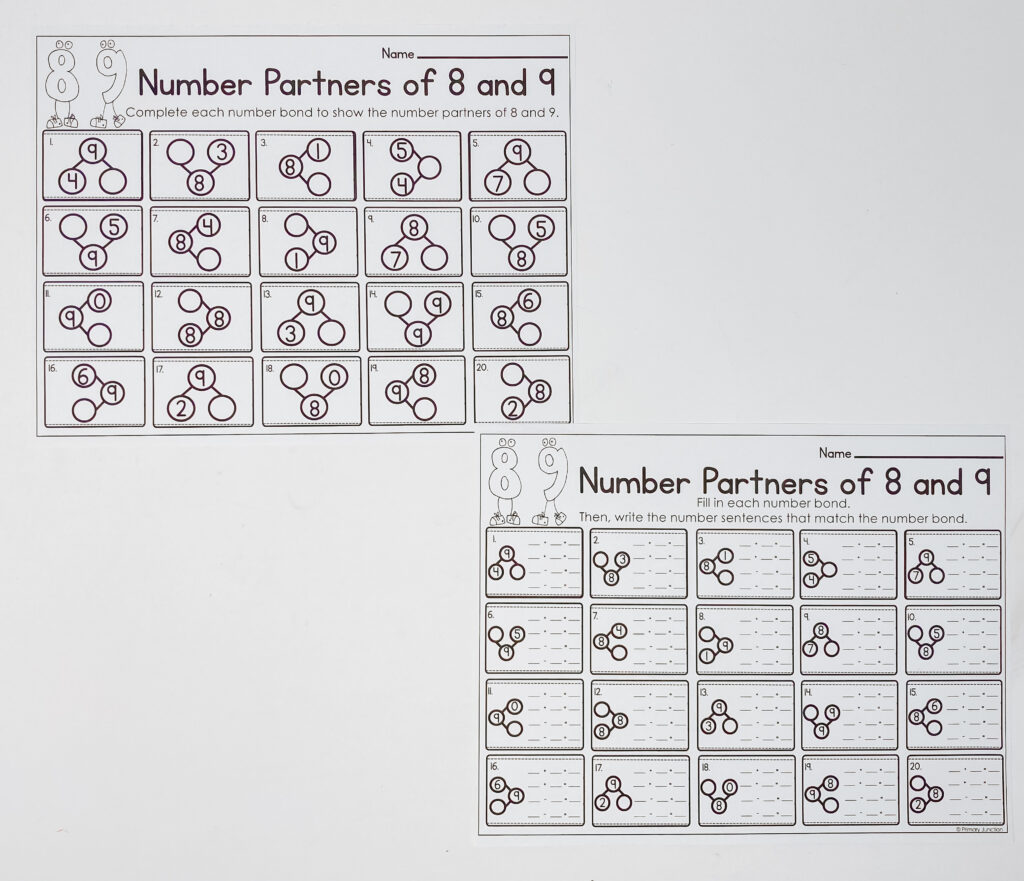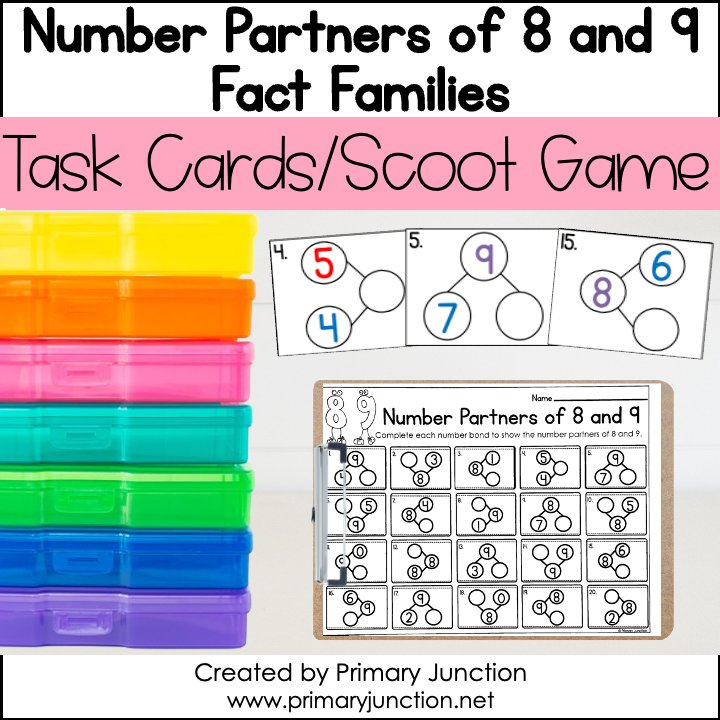How I Teach Number Partners of 8 and 9 Without Losing My Mind – Number Partners of 8 and 9 Scoot Game
Okay teacher friend – let’s talk about those tricky number partners of 8 and 9. You know the ones. Not quite as easy to memorize as 5+5 or 2+2, and not quite high enough to feel like “big kid” math, but still super important for fact fluency.
I’ve taught this concept a dozen different ways over the years, but one thing always holds true: kids need to see the patterns and move while they practice. That’s why I’ve started using this Number Partners of 8 and 9 Scoot Game as a go-to every time we hit this skill.
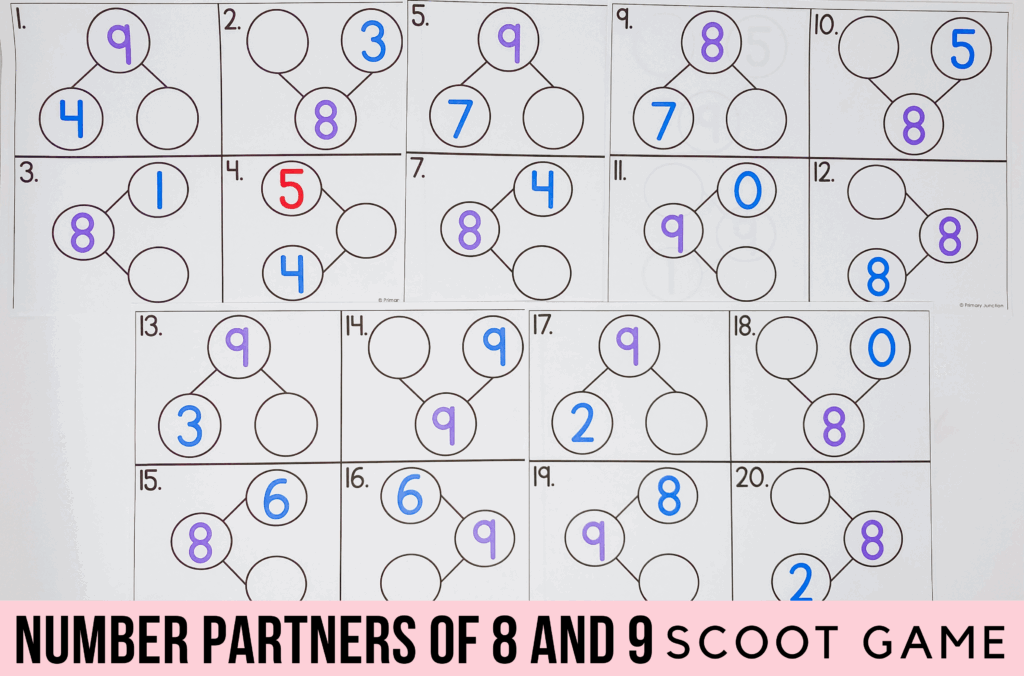
Let me tell you how I use it and how it’s helped my students not only get the facts down, but actually understand the why behind the numbers.
The Power of Number Bonds + Movement
If your students are like mine, sitting still while solving 8+0, 7+1, 6+2… over and over just doesn’t cut it. But the second you put a task card on a desk, hand them a recording sheet, and tell them we’re playing a game where they get to move—they’re all in.
That’s why I love using this activity as a Scoot Game or a Write the Room center. The combination of movement, number bond visuals, and fact family thinking just clicks for so many students.
They’re not just memorizing equations. They’re building an understanding of how numbers work together to make 8 and 9, and how addition and subtraction are connected.
What’s Inside the Number Partners of 8 and 9 Scoot Game Set?
This resource includes:
- 🎯 Task Cards/Scoot Cards (in both color and black-and-white for easy prep)
- ✏️ Two recording sheet options
- One just for number bonds
- One for number bonds and writing full fact families (2 addition + 2 subtraction sentences)
- ✅ Answer keys (huge time-saver during centers!)
- 📎 Easy-to-follow instructions
The facts included cover every combo for 8 and 9, like:
8+0, 7+1, 6+2, 5+3… all the way to 0+9. And yes, doubles like 4+4 are in there too!
How I Use It in My Classroom
Let me walk you through a typical day when I use this as a Scoot Game:
- I lay out the cards in number order around the room or on desks.
- Each student grabs a pencil and a recording sheet.
- I quickly review how to fill in a number bond, and for some groups, how to write a fact family that matches.
- Then we scoot! I usually give them a minute per card. When the timer beeps, they move to the next one.
- At the end, we review a few together and talk about the patterns we noticed.
But here’s the cool part: I’ve also used the exact same cards during math centers. Instead of scooting, they walk around with clipboards and complete them at their own pace. You can even use them in small groups or partner work.
Little Tweaks That Help
- If you’ve got some fast finishers, have them create their own number bonds on the back of the recording sheet and try to “stump” a partner..
- For kids who struggle with fact families, stick to the number bond only version at first.
- Print the black-and-white version and let them color-code pairs that belong together (e.g. all 9 partners in red, 8 partners in blue).
- Turn it into a “beat the clock” challenge and have them try to complete as many cards as possible in a set time. They LOVE that.
Why I Keep Coming Back to Scoot Games
When we’re teaching math facts, it’s so easy to fall into the “drill and kill” trap. But honestly, when kids understand the structure of number partners and how they relate to fact families, they’re more likely to retain it long-term.
This Number Partners of 8 and 9 Scoot Game has been such a low-prep, high-impact activity in my room. It’s fun, it gets them moving, and it builds foundational number sense in a way that’s developmentally appropriate for first graders.
I mean, what more can we ask for?
If you want to grab a copy to use with your students, you can get it here. Happy Learning!

